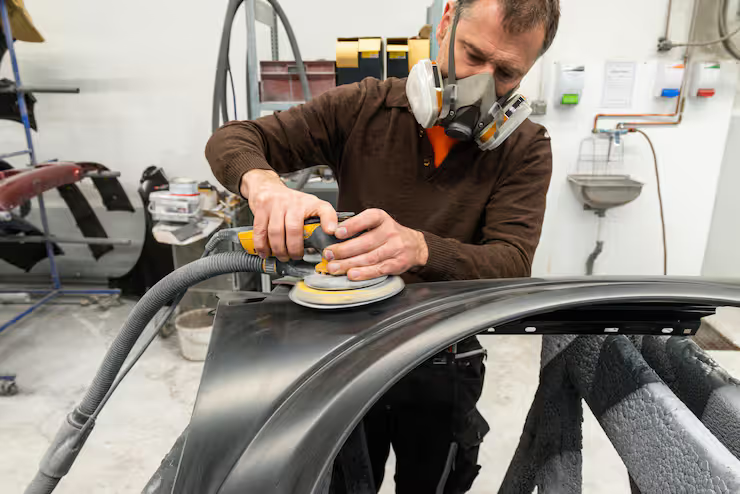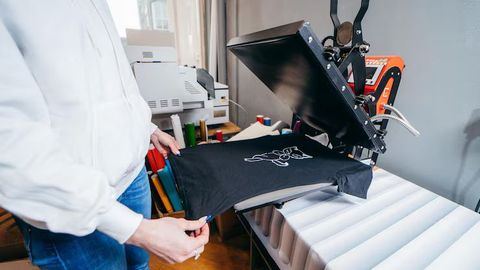Explore Polishing Machines: A Complete Guide with Key Facts and Insights
Polishing machines are mechanical tools designed to smooth, refine, and enhance the surface of materials such as metal, glass, plastic, wood, or stone. They are widely used across industries like manufacturing, automotive, jewelry, and construction to achieve precise surface finishes.
These machines operate using abrasive compounds, rotating wheels, or belts that remove microscopic layers from a material’s surface, giving it a smooth and glossy finish. Depending on the purpose, polishing can improve aesthetics, reduce friction, or prepare materials for further coating or painting.
Over time, the development of polishing machines has evolved from manual buffing methods to sophisticated automated systems. This advancement ensures consistent results, reduced labor, and enhanced production efficiency.
Why Polishing Machines Matter
Polishing plays a vital role in product quality, safety, and durability. A well-polished surface can resist corrosion, reduce wear, and improve appearance. In industries like aerospace, automotive, and medical devices, even small imperfections can affect performance or safety making precision polishing critical.
For manufacturers, polishing machines help in:
-
Improving product aesthetics and visual appeal
-
Ensuring dimensional accuracy and consistency
-
Extending the life of machinery and tools
-
Reducing surface friction for better mechanical performance
-
Enhancing reflectivity and cleanliness in components
Polishing technology also supports sustainability efforts. Many industries now focus on minimizing material waste and energy use through automated polishing systems. By optimizing polishing processes, factories can achieve better output with fewer resources.
This topic matters not only to industrial users but also to small workshops, DIY enthusiasts, and technical professionals who need to maintain tools or restore materials effectively.
Recent Developments and Industry Trends
The past few years have seen significant advancements in polishing technologies, especially in automation, robotics, and smart manufacturing. Between 2023 and 2025, key developments have shaped the polishing machine market:
-
Automation and AI Integration (2024): Companies have begun adopting intelligent polishing systems that use sensors and machine learning algorithms to detect surface imperfections automatically. These systems adjust pressure and speed dynamically for optimal polishing results.
-
Eco-Friendly Abrasives (2023–2024): There is a growing shift toward sustainable polishing compounds that are water-based, non-toxic, and recyclable. These materials reduce health risks and environmental impact.
-
Compact and Portable Designs (2024): Smaller, energy-efficient polishing machines have gained popularity for use in workshops and laboratories.
-
3D Component Polishing (2025): With the rise of additive manufacturing, new machines now polish complex 3D-printed surfaces automatically, improving finish quality and precision.
-
Global Market Growth: According to recent reports, the global polishing machine market is expected to grow steadily through 2030 due to increased demand in metalworking, construction, and electronics manufacturing.
Regulations and Industry Standards
Polishing machines are governed by multiple safety and quality regulations to protect workers and ensure consistent performance. These may vary depending on the country or region but typically include:
-
ISO 9001 (Quality Management): Ensures consistent manufacturing processes and performance of polishing equipment.
-
ISO 14001 (Environmental Management): Promotes environmentally responsible production, especially for abrasive materials.
-
Occupational Safety Standards: In the United States, OSHA regulations outline safety protocols for using polishing equipment, including proper ventilation, dust extraction, and protective gear.
-
EU Machinery Directive 2006/42/EC: In Europe, this directive mandates that polishing machines meet essential safety requirements before being sold or used commercially.
-
Noise and Vibration Regulations: Many countries have limits on the allowable noise and vibration levels generated by polishing equipment to protect workers from long-term health effects.
Government programs also encourage modernization in manufacturing. For instance, India’s “Make in India” initiative promotes the use of advanced machinery, including polishing systems, to improve industrial quality and export competitiveness.
Tools, Technologies, and Resources
Polishing machines come in various types and configurations, depending on the surface and finish required. Below is an overview of common types and their uses:
| Type of Polishing Machine | Application Area | Key Features |
|---|---|---|
| Bench Polisher | Metal finishing, small parts | Fixed machine with motorized spindle |
| Belt Polisher | Wood, metal, and plastic surfaces | Uses abrasive belts for rapid removal |
| Vibratory Polisher | Jewelry and small components | Polishes multiple items simultaneously |
| CNC Polishing Machine | Automotive, aerospace | Automated precision polishing |
| Floor Polisher | Marble, granite, tile floors | Ideal for large flat surfaces |
| Ultrasonic Polisher | Molds, dies, delicate materials | Uses ultrasonic vibration for precision |
Useful Tools and Online Resources
-
Abrasive Material Selector: Helps determine suitable abrasive compounds based on material type.
-
Polishing Speed Calculator: Estimates ideal RPM and pressure for specific applications.
-
Industrial Safety Guidelines: Available through OSHA and ISO websites for operator training.
-
YouTube Learning Channels: Educational channels like “Engineering Explained” and “Machinery World” provide practical tutorials.
-
Technical Manuals and PDFs: Manufacturers such as 3M, Bosch, and Metabo offer downloadable resources on polishing techniques.
These resources support users in choosing the right polishing machine, maintaining it effectively, and ensuring compliance with safety standards.
Frequently Asked Questions
What is the difference between polishing and buffing?
Polishing typically removes scratches and imperfections using abrasive compounds, while buffing provides the final shine or luster using softer materials and polishing wheels.
Can polishing machines be used for all materials?
Not all machines suit every material. For example, metals may require high-speed polishers with specific abrasives, while plastics and glass need gentler polishing tools to prevent damage.
Are automated polishing systems worth using?
Yes. Automated systems enhance consistency, reduce human error, and speed up production. They are especially beneficial for industries with high precision requirements.
How often should polishing machines be maintained?
Routine maintenance such as cleaning, lubrication, and part replacement should occur based on usage frequency — typically every 3 to 6 months. Preventive checks ensure long equipment life and quality results.
What safety measures should be followed during polishing?
Operators should wear protective eyewear, gloves, and masks. Adequate ventilation, proper machine guarding, and adherence to safety guidelines are crucial to prevent injuries and dust inhalation.
Conclusion
Polishing machines play a fundamental role in modern manufacturing, design, and craftsmanship. From refining metal surfaces to enhancing the finish of delicate materials, they contribute to product quality, safety, and appearance. The industry continues to evolve with automation, smart technologies, and eco-friendly materials, reflecting global shifts toward sustainability and efficiency.
Understanding different machine types, recent advancements, and regulatory requirements helps users make informed decisions and operate polishing machines safely and effectively. As manufacturing standards rise worldwide, polishing remains not just a mechanical process but a cornerstone of precision engineering.






